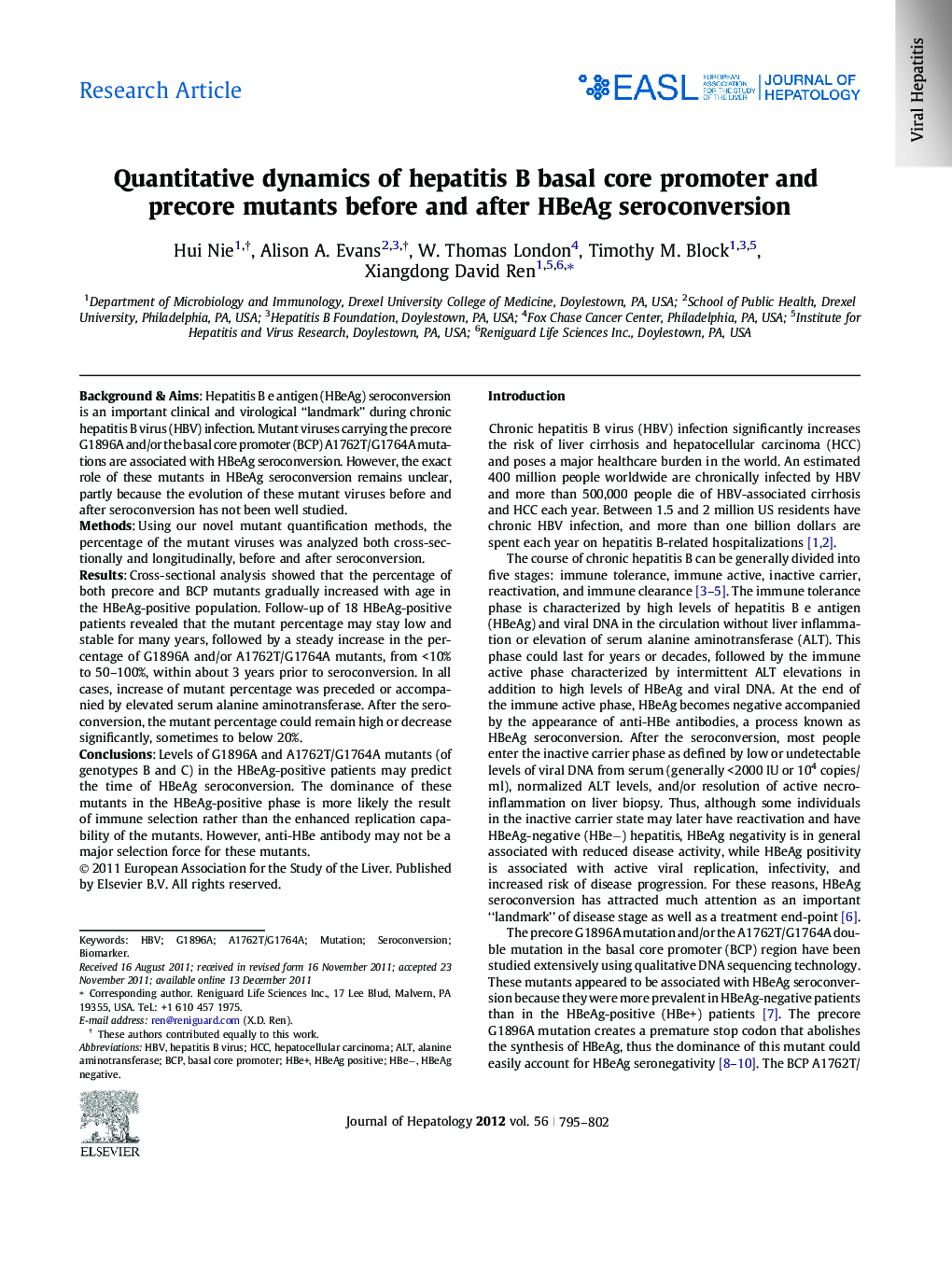| Article ID | Journal | Published Year | Pages | File Type |
|---|---|---|---|---|
| 6107583 | Journal of Hepatology | 2012 | 8 Pages |
Background & AimsHepatitis B e antigen (HBeAg) seroconversion is an important clinical and virological “landmark” during chronic hepatitis B virus (HBV) infection. Mutant viruses carrying the precore G1896A and/or the basal core promoter (BCP) A1762T/G1764A mutations are associated with HBeAg seroconversion. However, the exact role of these mutants in HBeAg seroconversion remains unclear, partly because the evolution of these mutant viruses before and after seroconversion has not been well studied.MethodsUsing our novel mutant quantification methods, the percentage of the mutant viruses was analyzed both cross-sectionally and longitudinally, before and after seroconversion.ResultsCross-sectional analysis showed that the percentage of both precore and BCP mutants gradually increased with age in the HBeAg-positive population. Follow-up of 18 HBeAg-positive patients revealed that the mutant percentage may stay low and stable for many years, followed by a steady increase in the percentage of G1896A and/or A1762T/G1764A mutants, from <10% to 50-100%, within about 3 years prior to seroconversion. In all cases, increase of mutant percentage was preceded or accompanied by elevated serum alanine aminotransferase. After the seroconversion, the mutant percentage could remain high or decrease significantly, sometimes to below 20%.ConclusionsLevels of G1896A and A1762T/G1764A mutants (of genotypes B and C) in the HBeAg-positive patients may predict the time of HBeAg seroconversion. The dominance of these mutants in the HBeAg-positive phase is more likely the result of immune selection rather than the enhanced replication capability of the mutants. However, anti-HBe antibody may not be a major selection force for these mutants.
